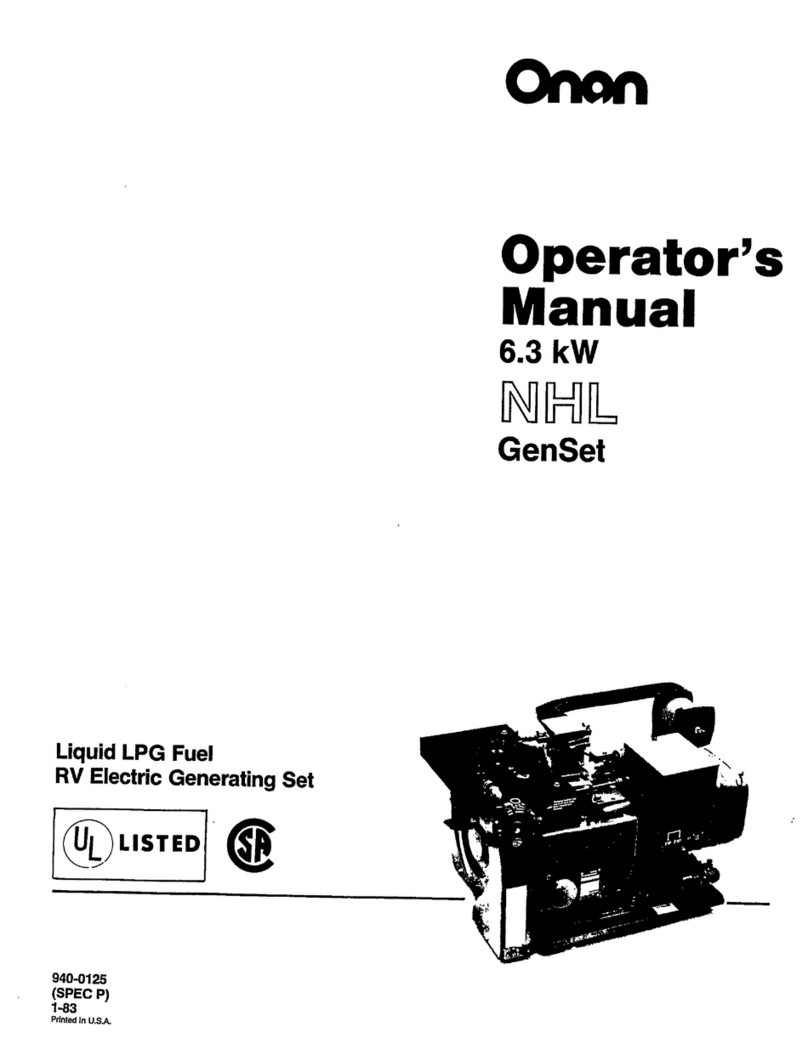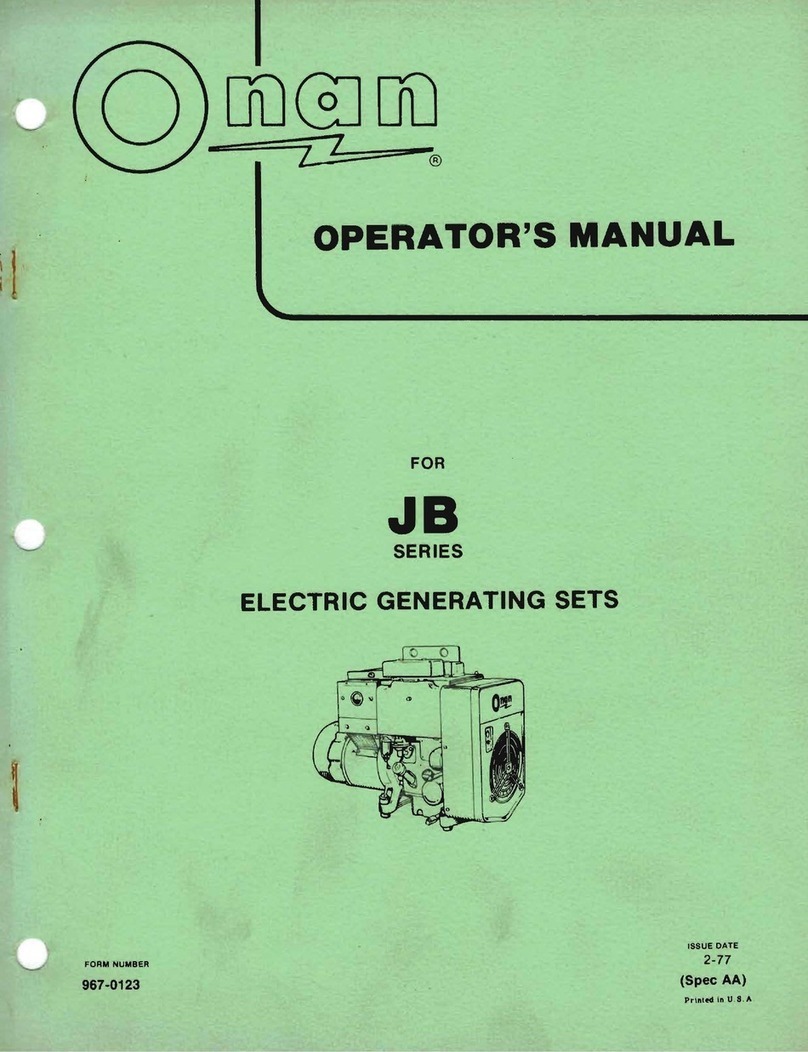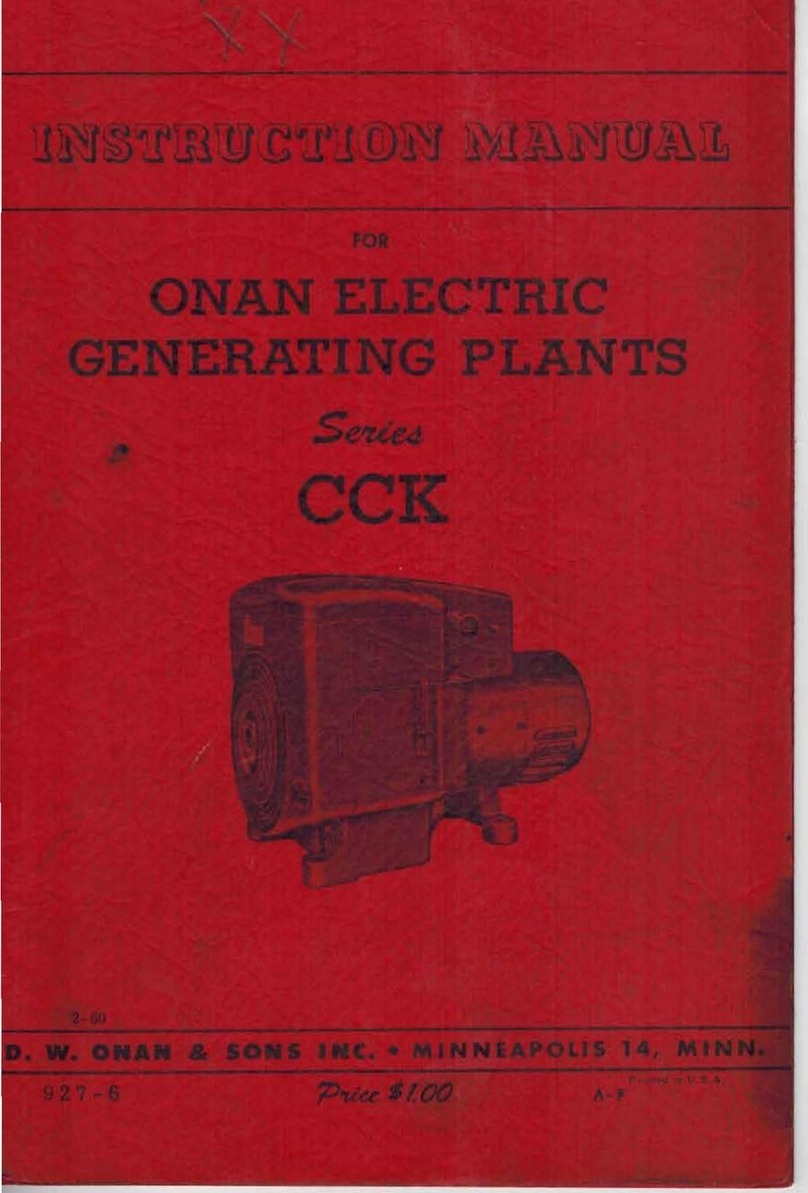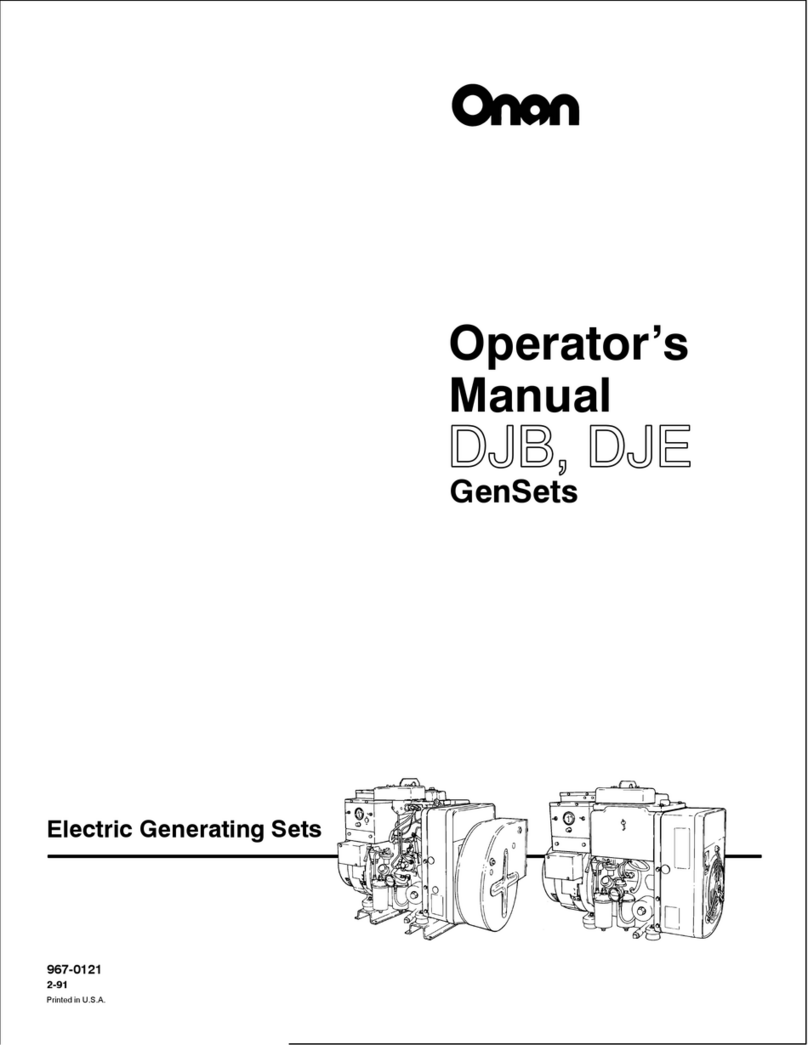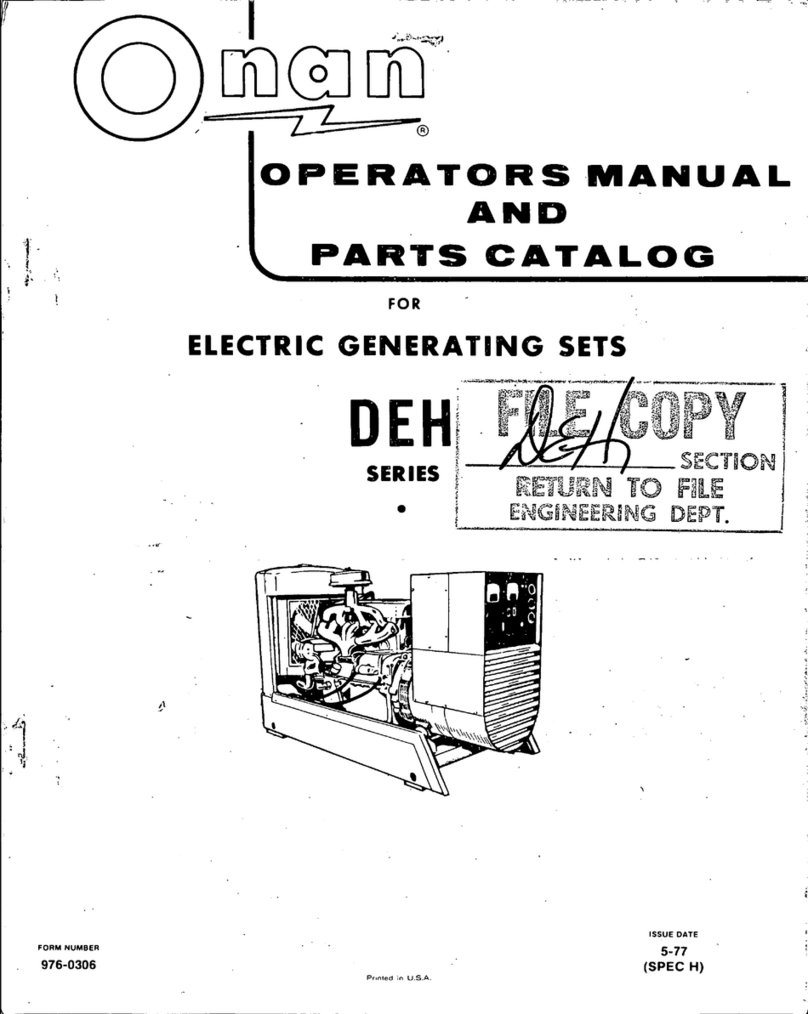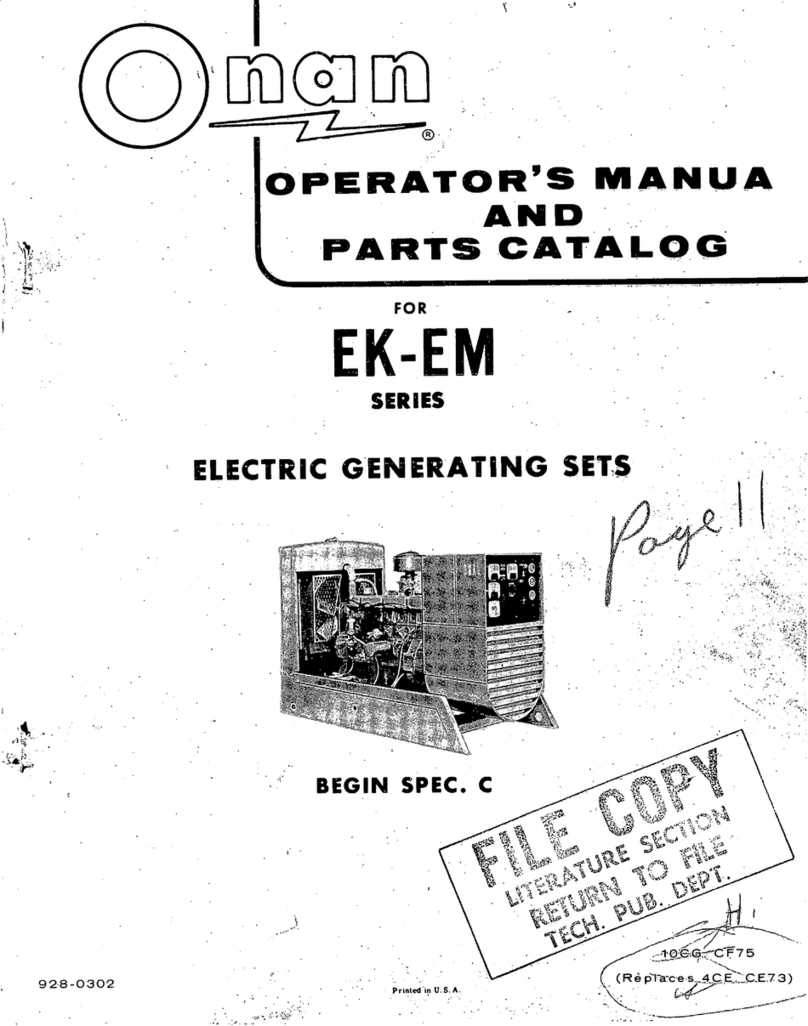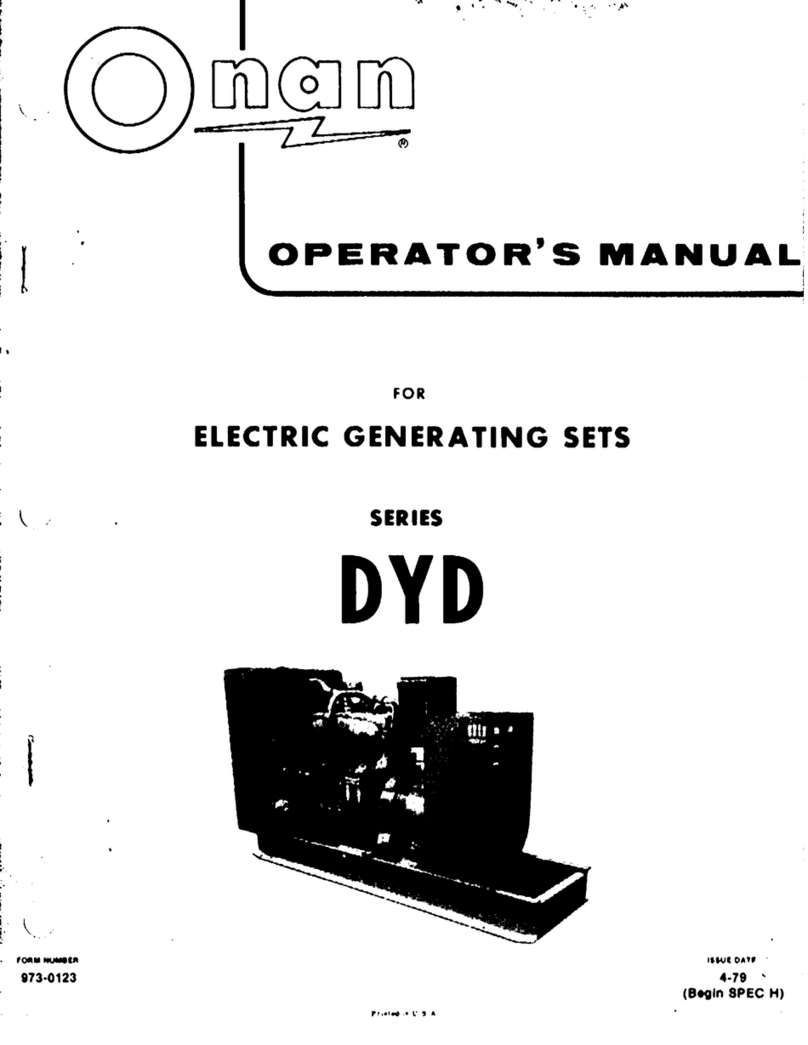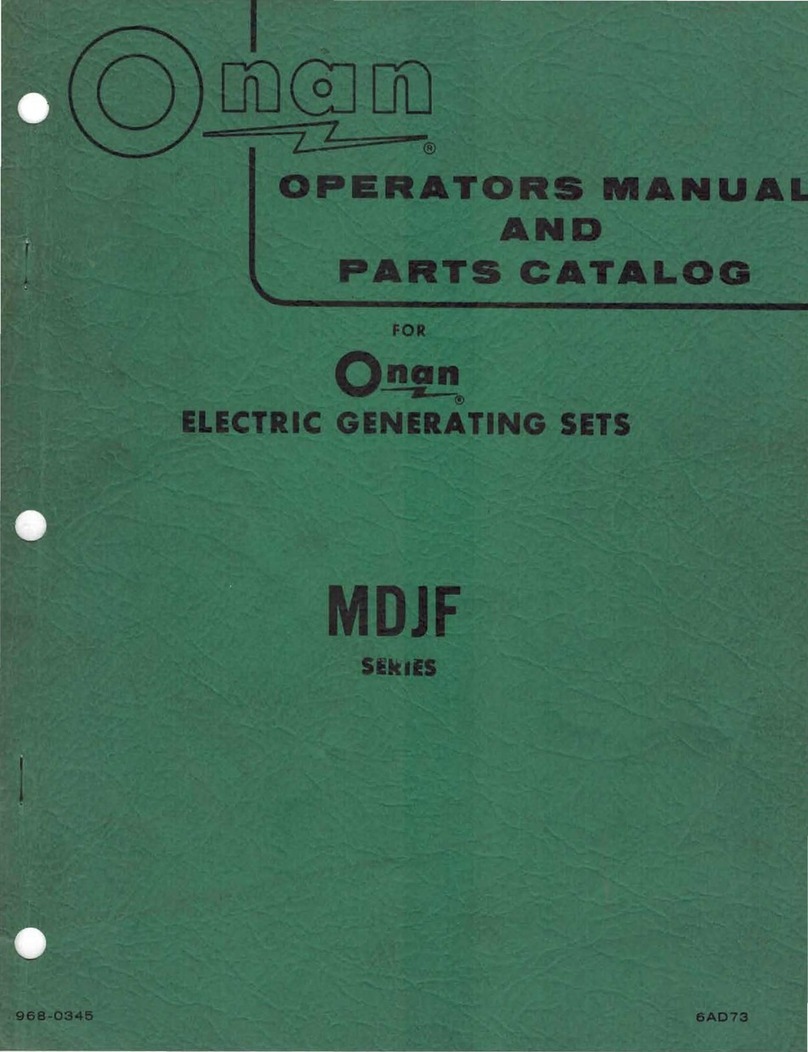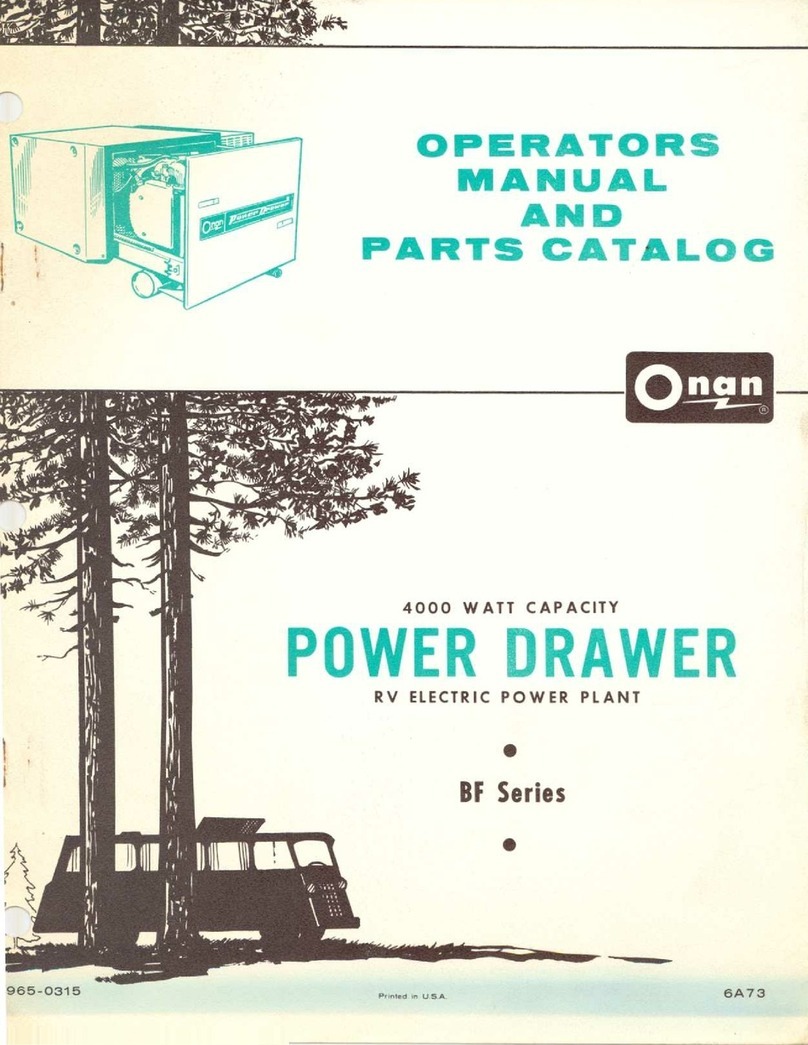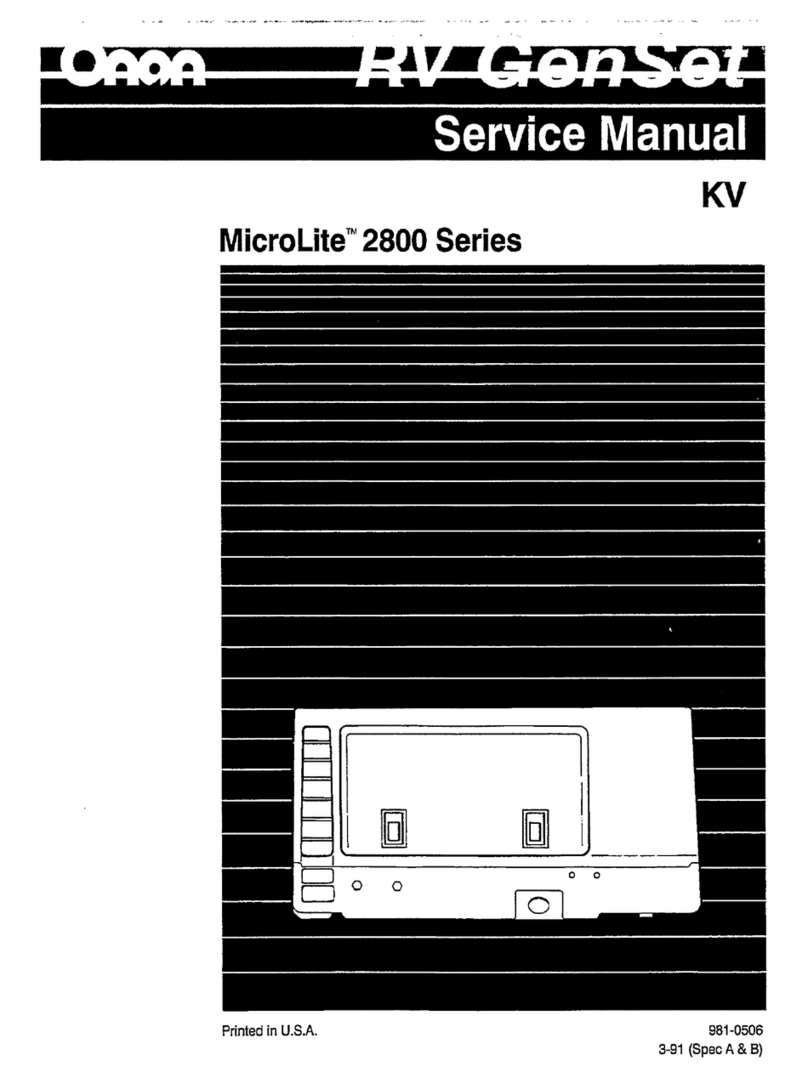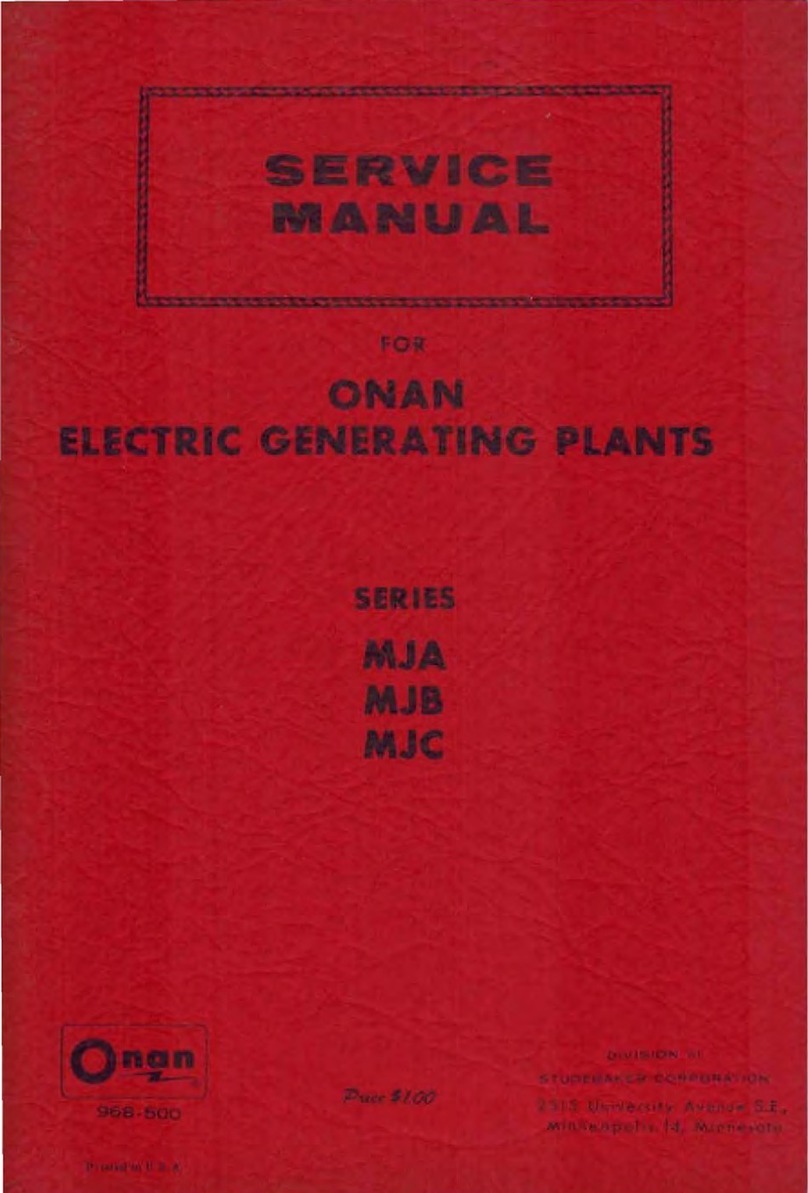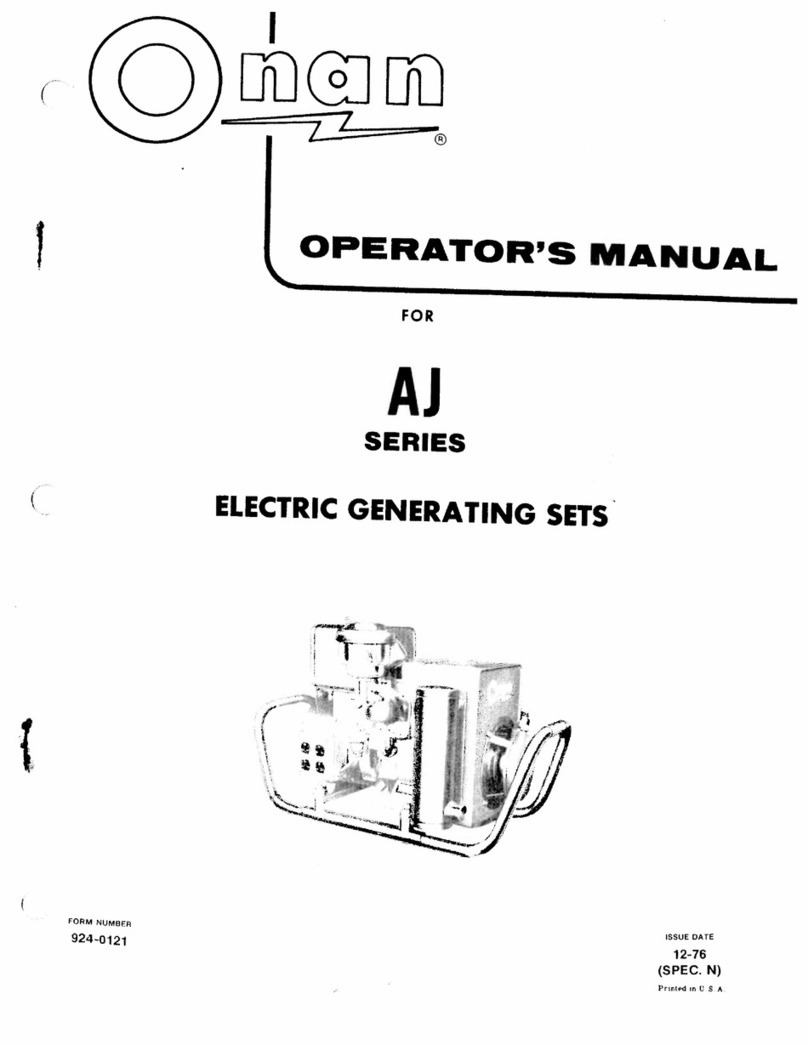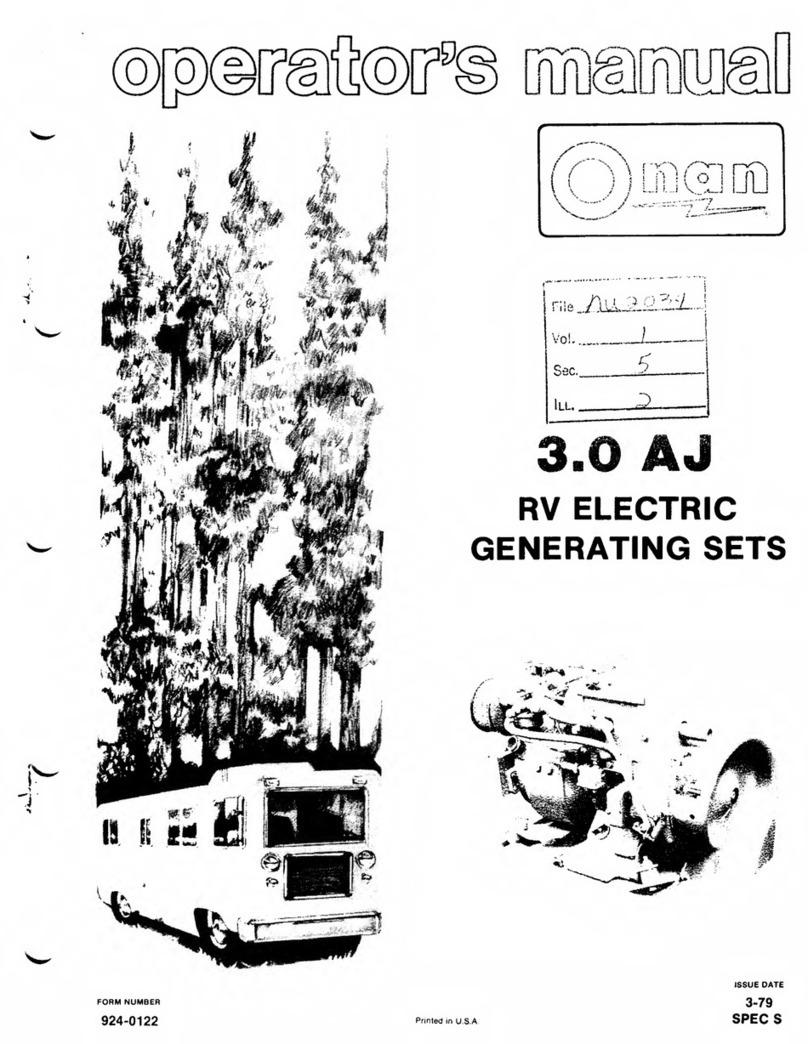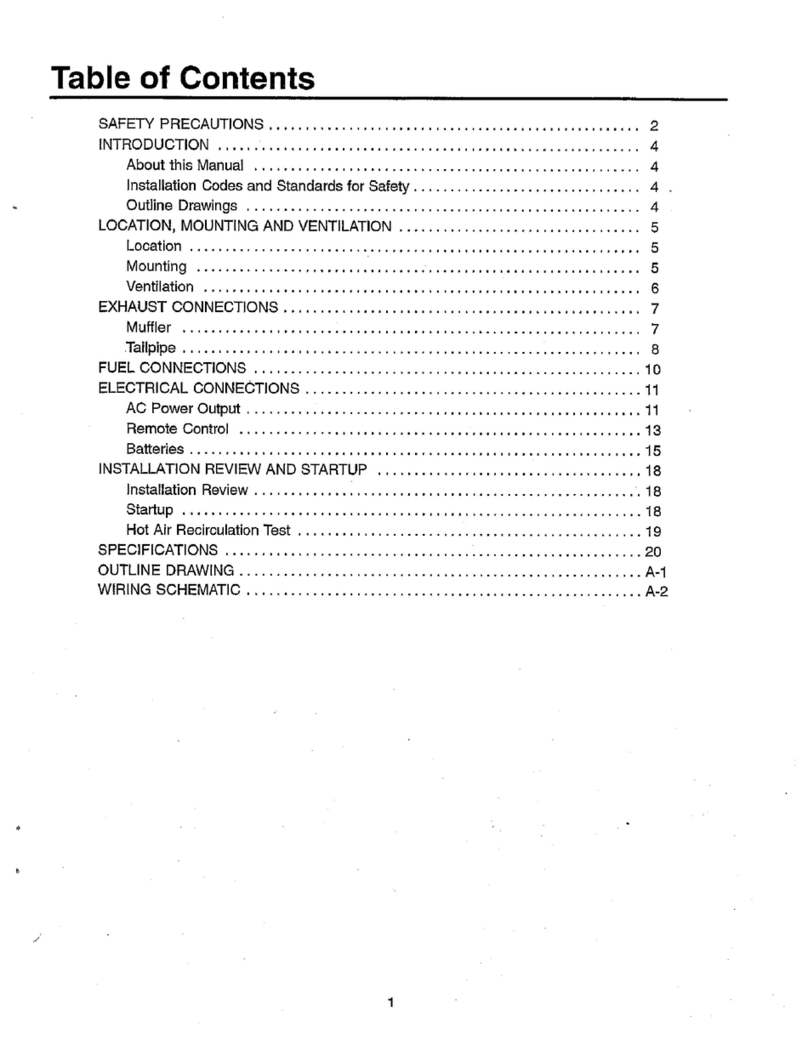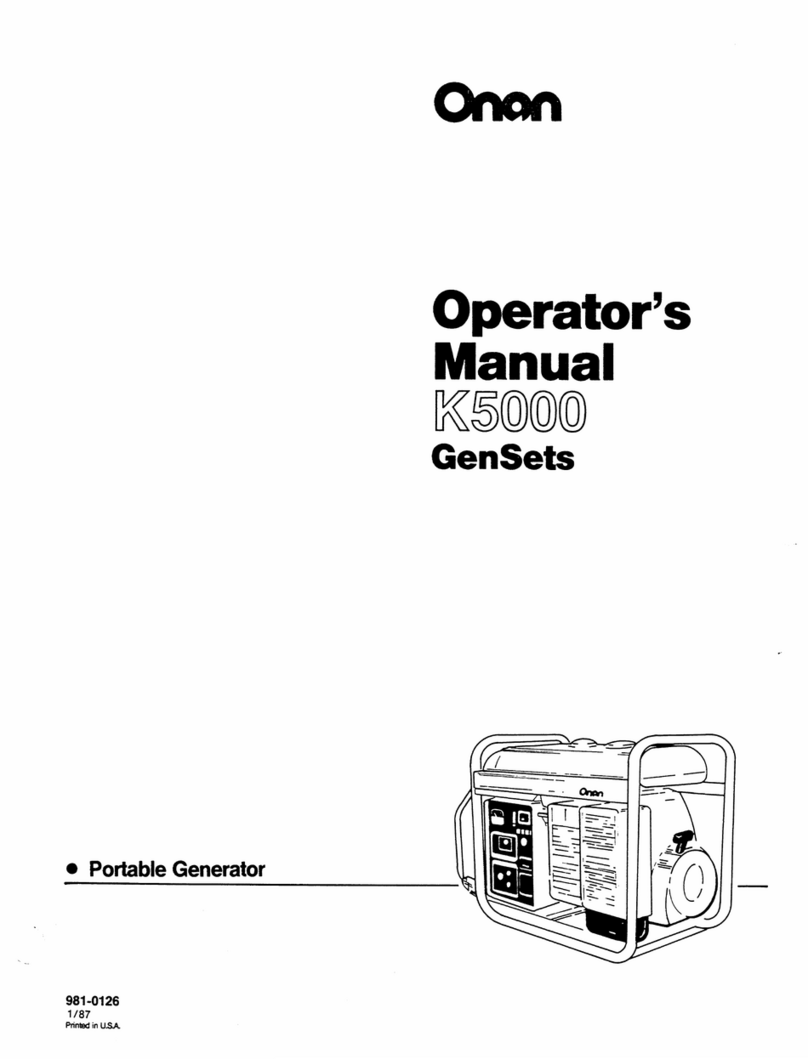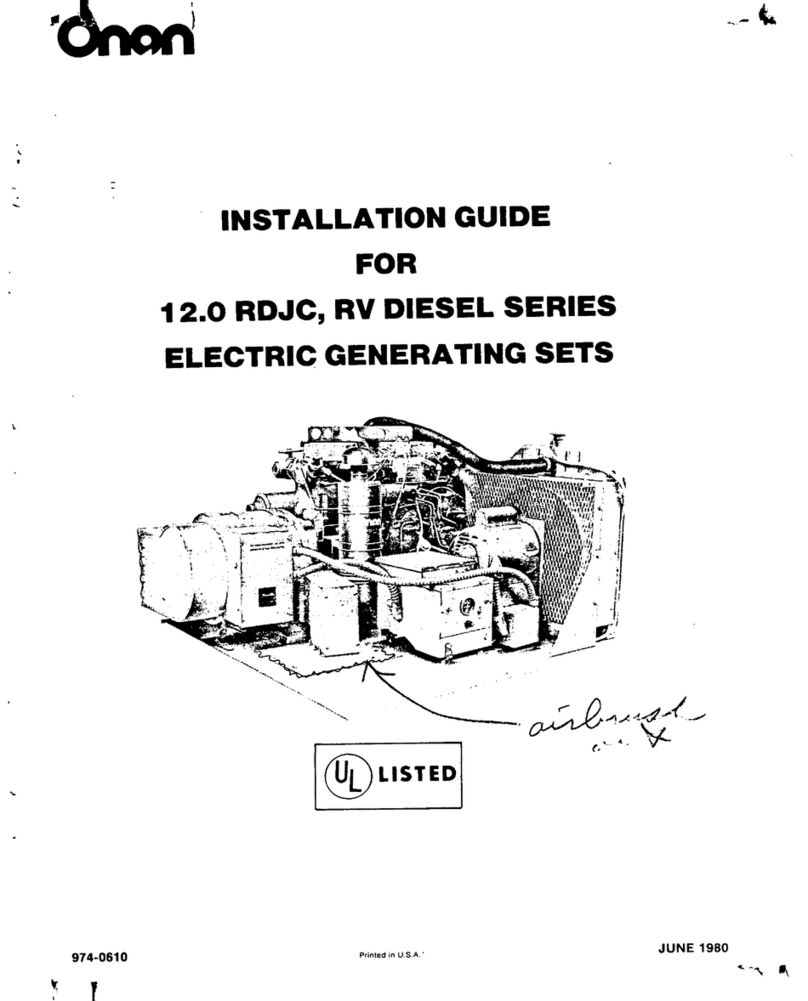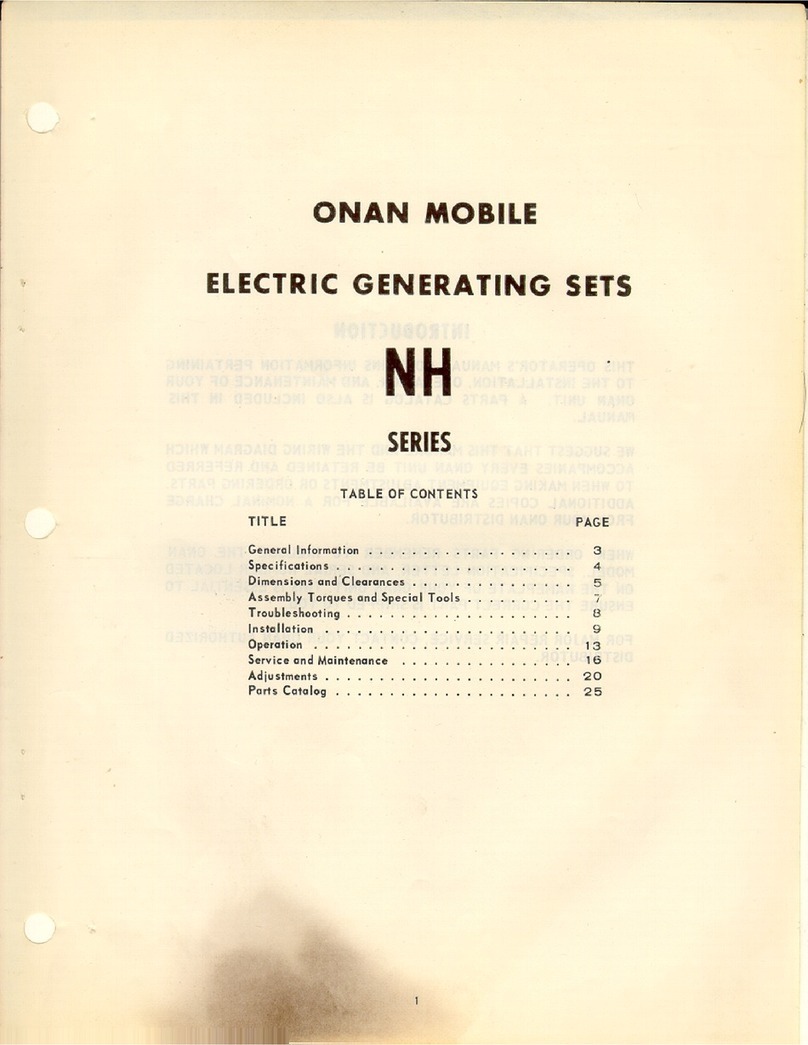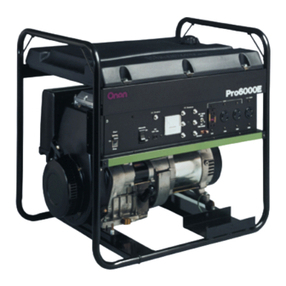
EXHAUST
Vent
all
exhaust
gases
outside.
The
exhaust
outlet
must
not
terminate
near
air
inlet
vents
or
combustible
materials.
Avoid
sharp
bends
and
use
large
radius
elbows
in
the
exhaust
piping.
If
the
piping
cannot
be
pitched
downward,
install
a
condensation
trap
in
the
system
where
a
rise
begins
(Figure
6).
The
exhaust
line
connects
to
a
one-inch
NPTF
outlet
at
engine.
Use
one
pipe
size
larger
for
each
ten
feet
in
length.
Position
the
exhaust
outlet
away
from
the
set
air
intake.
WARNING
I
POISONOUS
exhaust
gas
outside
enclosure.
Inhalation
of
exhaust
gases
can
result
in
serious
injury
or
death.
IF
EXHAUST
LINE
MUST
BE
PITCHED
UPWARD
CONSTRUCT
A
TRAP
OF
PIPE
FITTINGS
AT
POINT
OF
RISE
[
AVOID
SHARP
BENDS
DRAIN
CONDENSATION
TRAP
PERIODICALLY
FIGURE
6.
CONDENSATION
TRAP
Exhaust
piping
must
not
come
closer
than
9
inches
to
combustible
material.
Where
the
system
leaves
the
building,
install
a
thimble.
See
Figure
7.
SINGLE
THIMBLE
DIAMETER
12
LARGER
OR
DOUBLE
^
VENTILATED
THIMBLE
DIAMETER
6
LARGER
THAN
EXHAUST
LINE
HOLES
IN
END
INNER
SLEEVE
EXHAUST
LINE
PASSING
THROUGH
It
WALL
OR
PARTITION
FIGURE
7.
EXHAUST
THIMBLE
OIL
DRAIN
If
desired
for
convenience
in
draining
oil,
remove
the
oil
drain
plug
and
install
an
extension
pipe
and
coupling.
Oil
base
has
3/8-inch
pipe
tapped
hole.
REMOTE
START-STOP
SWITCH
(Optional)
For
remote
control
starting
and
stopping,
use
three
wires
to
connect
the
remote
switch
(SPOT,
momen¬
tary
contact,
center-off
type)
to
the
terminal
block
marked
B+,
1,
2,
3,
in
the
set
control
box.
Use
#18
gauge
wire
for
runs
up
to
250
feet
(76
m)
and
larger
wire
for
longer
runs.
See
Figure
8.
LOAD
WIRE
CONNECTIONS
The
generating
set
nameplate
shows
the
electrical
output
rating
of
the
set
in
watts,
volts
and
hertz.
The
portable
models
are
prewired
and
have
a
receptacle
box
with
two
duplex
120-volt
(15-ampere),
grounding
receptacles
and
two
240-volt
(20-ampere),
twist-lock
receptacles.
For
the
other
generating
sets,
the
wiring
diagram
shows
the
electrical
circuits
and
necessary
connections
for
the
available
output
voltage.
A
qualified
serviceman
orelectrician
should
make
the
installation
and
the
installation
should
be
inspected
and
approved
to
meet
all
applicable
code
re¬
quirements.
The
AC
output
box
has
provisions
to
accommodate
load
wires.
Use
flexible
conduit
and
sufficiently
large
stranded
load
wires
near
the
set
to
absorb
vibration.
Strip
the
insulation
from
the
wire
ends
as
necessary
for
clean
connections.
Connect
each
load
wire
to
the
proper
generator
output
lead
inside
the
AC
output
box.
Insulate
bare
ends
of
ungrounded
wires.
Install
a
fused
main
switch
(or
circuit
breaker)
between
the
generating
set
and
the
load.
Reconnectible,
Single-Phase
Generator:
Voltage
selection
on
reconnectible
sing
ie-phase
generators
is
120/240
volts,
3
wire;
120
volts,
2
wire;
or,
240
volts,
2
wire
(Figure
9).
Use
the
connection
for
two-wire
service
when
one
load
exceeds
one-half
the
rated
capacity.
Balance
the
load
when
connecting
for
three-wire
service.
Current
for
any
one
output
lead
must
not
exceed
nameplate
rating.
Serious
overloading
can
damage
the
generator
windings.
When
two
or
more
single-phasecircuitsareavailable,
divide
the
load
equally
between
them.
Three-Phase,
Four-Wire,
Wye
Connected
Generators:
A
three-phase,
four-wire
generating
set
produces
single-phase
current
of
the
lower
nameplate
voltage
and
three-phase
current
of
the
higher
nameplate
voltage
(Figure
10).
For
single¬
phase
current,
connect
the
neutral
(white)
load
wire
to
the
grounded
terminal.
Connect
the
“hot”
(black)
load
wire
to
any
one
of
the
other
three
terminals
.
.
.
M',
or
M^.
Three
separate
single¬
phase
circuits
are
available,
with
not
more
than
one-
third
the
rated
capacity
of
the
generating
set
from
any
one
circuit.
For
three-phase
current,
connect
separate
load
wires
to
eachofthegeneratorterminals
M\
and
M^.
Single-phase
current
of
the
higher
nameplate
voltage
is
obtained
between
any
two
three-
phase
terminals.
FIGURE
8.
REMOTE
START-STOP
SWITCH
7
